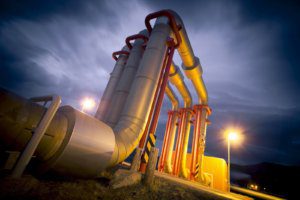
Rubizhne cardboard packaging mill in Luhansk region, one of Ukraine’s largest cardboard packaging producers, produced 188.62 million square meters of corrugated cardboard boxes in January-September 2018, including goods from its Trypilsky packaging plant, which is 14.5% up year-over-year. The mills increased production of components of corrugated cardboard (cardboard and fluting) by 4.4%, to 219,210 tonnes.
The total commodity amount produced by both plants in the period in monetary terms grew by 30.6%, to UAH 4.138 billion. According to UkrPapir association, cardboard packaging production in Ukraine in January-September 2018 grew by 1.2% and amounted to 748.29 million square meters.
The Rubizhne cardboard packaging mill has worked on the packaging market since 1991, and specializes in the production of components for corrugated cardboard (cardboard and fluting) and corrugated cardboard boxes. Its most important customers are large confectioneries, juice and tobacco producers. The Rubizhne cardboard packaging mill acquired Trypilsky packaging plant in 2002 and subsequently began producing corrugated cardboard and corrugated packaging.

The Ukrainian business retains positive expectations regarding the level of business activity for the next 12 months, according to a poll of company heads conducted by the National Bank of Ukraine (NBU) in the third quarter of 2018. “As in the previous polls, business activity is expected to boost by respondents of all types of economic activity. The most optimistic forecasts are in the processing industry. The business expectations index for the next 12 months was 117.2%,” the central bank reported on its website. The high economic activity growth pace remains mainly due to improved forecasts for the total sales of own products, as well as investment expenditures on machinery, equipment and inventory. At the same time, enterprises of all types of activities, except agricultural, expect further growth of foreign investments.
At the same time, the business pointed out a low level of stocks of finished products and the lack of its own production facilities in the event of an unexpected increase in demand.
The expectations of the respondents regarding the need for borrowed funds in the near future remained virtually unchanged compared with the previous quarter. At the same time, the majority of respondents who plan to attract loans are interested in financing in national currency. At the same time, the share of respondents planning to attract bank loans is declining for the third quarter in a row amid high credit rates.
The expectations of all enterprises in terms of production of goods and services in Ukraine for the next 12 months remain high: more than 30% of respondents expect production to grow, and about 50% are convinced that it will remain at the same level. Positive expectations have been observed for the last 10 quarters in a row.
For the second quarter in a row, the surveyed enterprises are lowering inflation expectations. “According to the survey, consumer price growth is expected to be at the level of 8.9% (in the second quarter of 2018 – 9.6%). The main factor affecting the price increase is the hryvnia exchange rate to foreign currencies (82.8% of responses). Production costs are at the second position, but the weight of this factor decreased by 3.1 percentage points compared to the previous quarter – to 68.5%,” the NBU said.
According to representatives of enterprises surveyed, in the next 12 months, consumer income and prices in global markets will affect the dynamics of consumer prices.
The National Bank said that the survey was conducted from August 3 through September 4, 2018. A total of 682 enterprises from 22 regions (excluding the temporarily occupied territories of the Autonomous Republic of Crimea, as well as Donetsk and Luhansk regions), which represent the economy by main types of activities, ownership and size by the number of employees, took part in the survey.

Ukraine after the completion of the heating season increased its natural gas reserves in the underground gas storage facilities by 9.243 billion cubic meters (bcm), according to data from Ukrtransgaz. So, from April 8 to October 14, 2018 gas inventories rose by almost 2.2 times, from 7.435 bcm to 16.678 bcm.
According to the calculations of the Interfax-Ukraine agency, on October 1 through October 14 gas storage facilities were replenished by 443.72 million cubic meters (mcm, 31.69 mcm per day), in September by 1.595 bcm (53.17 mcm a day), in August by 1.793 bcm (57.85 mcm per day), in July by 1.655 bcm (53.38 mcm per day), in June by 1.623 bcm (54.09 mcm per day), in May by 1.632 bcm (52.65 mcm per day), April 9-30 by 500.84 mcm (22.77 mcm per day).
Ukraine came out from the 2017/2018 heating season with the minimum stocks in the last four seasons due to the frosty March-early April.
As reported, the Cabinet of Ministers of Ukraine expects that gas inventories by November 1, 2018 will amount to 17 bcm.